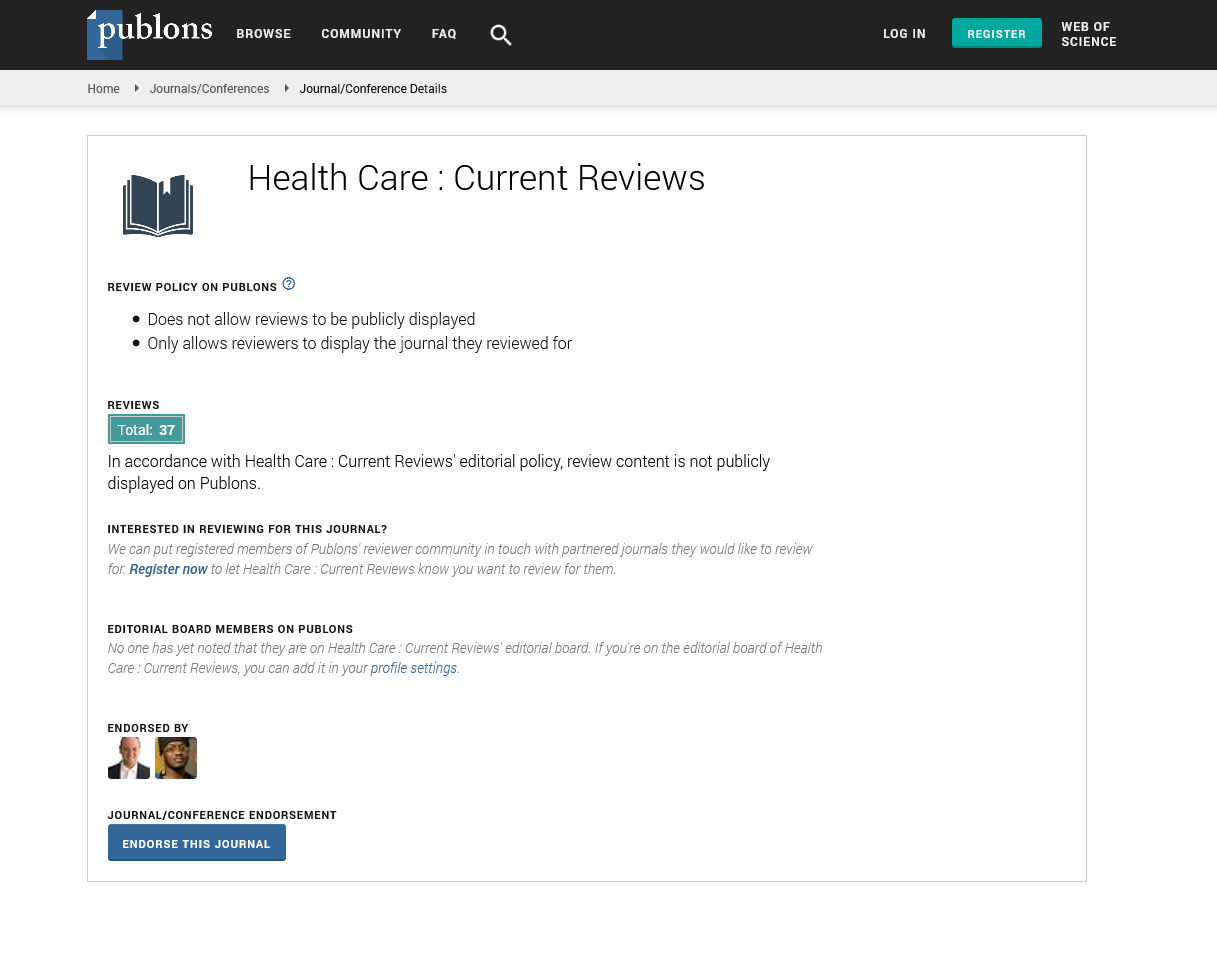Indexed In
- Open J Gate
- Academic Keys
- RefSeek
- Hamdard University
- EBSCO A-Z
- Publons
- Geneva Foundation for Medical Education and Research
- Google Scholar
Useful Links
Share This Page
Journal Flyer

Open Access Journals
- Agri and Aquaculture
- Biochemistry
- Bioinformatics & Systems Biology
- Business & Management
- Chemistry
- Clinical Sciences
- Engineering
- Food & Nutrition
- General Science
- Genetics & Molecular Biology
- Immunology & Microbiology
- Medical Sciences
- Neuroscience & Psychology
- Nursing & Health Care
- Pharmaceutical Sciences
Editorial - (2023) Volume 11, Issue 2
Cystinuria and its Chronic Disorders in Kidney Disease
James Burner*Received: 03-Mar-2023, Manuscript No. HCCR-23-20509; Editor assigned: 06-Mar-2023, Pre QC No. HCCR-23-20509(PQ); Reviewed: 22-Mar-2023, QC No. HCCR-23-20509; Revised: 29-Mar-2023, Manuscript No. HCCR-23-20509(R); Published: 05-Apr-2023, DOI: 10.35248/2375-4273.23.11.343
Description
Cystinuria is a rare autosomal recessive disorder that affects the reabsorption of cystine and dibasic amino acids by epithelial cells of the renal proximal tubules and gastrointestinal tract. It is caused by mutations in the SLC3A1 and SLC7A9 genes, which encode components of the cystine transporter. Elevated urinary concentrations of poorly soluble cystine are clinically important as they lead to recurrent cystine nephrolithiasis. Although the disorder accounts for 1% of kidney stones in adults and her 7% in children. Cystine stones not only affect the quality of patients suffering from cystinuria but also recurrently cause kidney damage which leads to Chronic Kidney Disease (CKD). Therefore, the main stay of medical management revolves around stone prevention. The main purpose of guidelines for the medical management of patients with cystinuria provides new insights and discuss the future directions for therapeutic.
Cystinuria, Such future directions including the potential use of the cystine mimetics, gene therapy, V2 receptor blockers and SGLT2 inhibitors have not emerged in recent treatments. Treatment of cystinuria gradually escalates, requiring additional pharmacotherapy with Cystine-Binding Thiol Drugs (CBTD) for patients who continue to suffer from recurrent cystine kidney stones despite the use and adherence to conservative therapy by decreasing the disulfide bonds of cystine resulting in more soluble drug-cysteine complexes and less free cystine in the urine. Retrospective studies have shown that the use of CBTD is effective in reducing cystine stone growth, stone formation and incidence of urological surgery.Early literature showed a lower incidence of side effects for thiopronin compared to penicillamine, so it is generally considered a first-line drug. The starting dose of thiopronin is 15 mg/kg/day-40 mg/kg/day, usually about 600 mg to 900 mg per day in 3 divided doses. No maximum dose is given. The average dose in clinical studies was approximately 800 mg/day. Cystine stone-formers are more common and severe stone-formers compared to non-cystine stone-formers with a greater direct impact on the quality of life of cystinuria. Patients taking thiopronin showed a generally better quality of life than those with cystinuria.
Both American and European guidelines recommend that he collect a 24-hour urine sample at baseline and annually thereafter in patients with calculi to monitor the effectiveness of the treatment administered. Samples should be monitored for urine output, pH, sodium and creatinine. Spot urine testing of freshly voided samples for pH, presence of crystalluria and specific gravity is useful in the clinic. Self-monitoring and reporting of pH and urine specific gravity measurements at home is also recommended. Measurement of the proteinor or creatinine ratio is suitable for her CBTD patients with frequent urological surgeries or a history of Chronic Kidney Disease (CKD). Twenty-four hour monitoring of urinary cystine concentration is also recommended with a target concentration of less than 250 mg/L. However it is consistently noted that measurements have inherent errors. Most commonly reported this assay fails to distinguish between cystine and cystine-thiol drug conjugates, resulting in inaccurate measurements in CBTD patients. A solid-phase assay called cystine content has been proposed as a more reliable method to quantify cystine levels in urine. The assay works by adding a known amount of solid cystine to a patient's urine sample, followed by centrifugation at 37°C for 48 hours to collect crystals. In undersaturated urine the urine is said to have a positive capacity because crystals dissolve, the urine dissolves more solid cystine, and less solid cystine is recovered. It has a negative capacity as it grows and absorbs cystine from the urine and recovers more solid cystine.
Citation: Burner J (2023) Cystinuria and its Chronic Disorders in Kidney Disease. Health Care Curr Rev. 11:343.
Copyright: © 2023 Burner J. This is an open-access article distributed under the terms of the Creative Commons Attribution License, which permits unrestricted use, distribution, and reproduction in any medium, provided the original author and source are credited.

